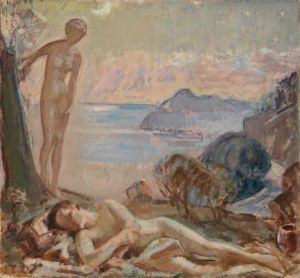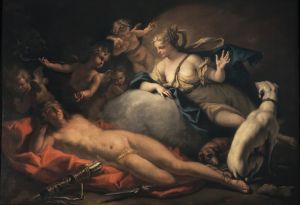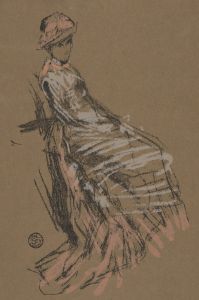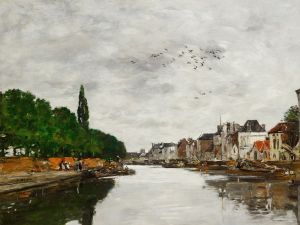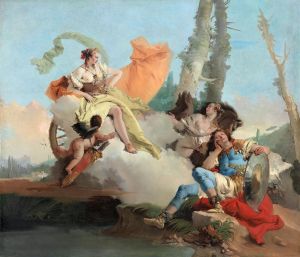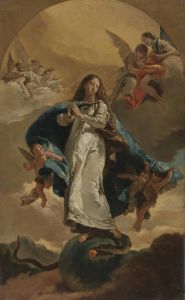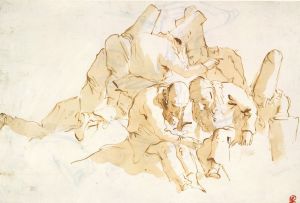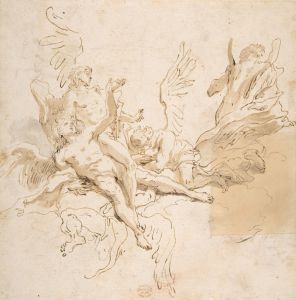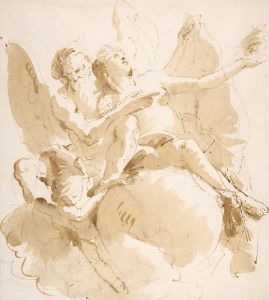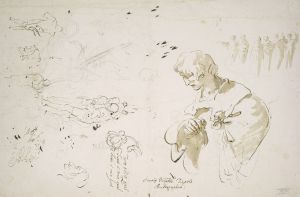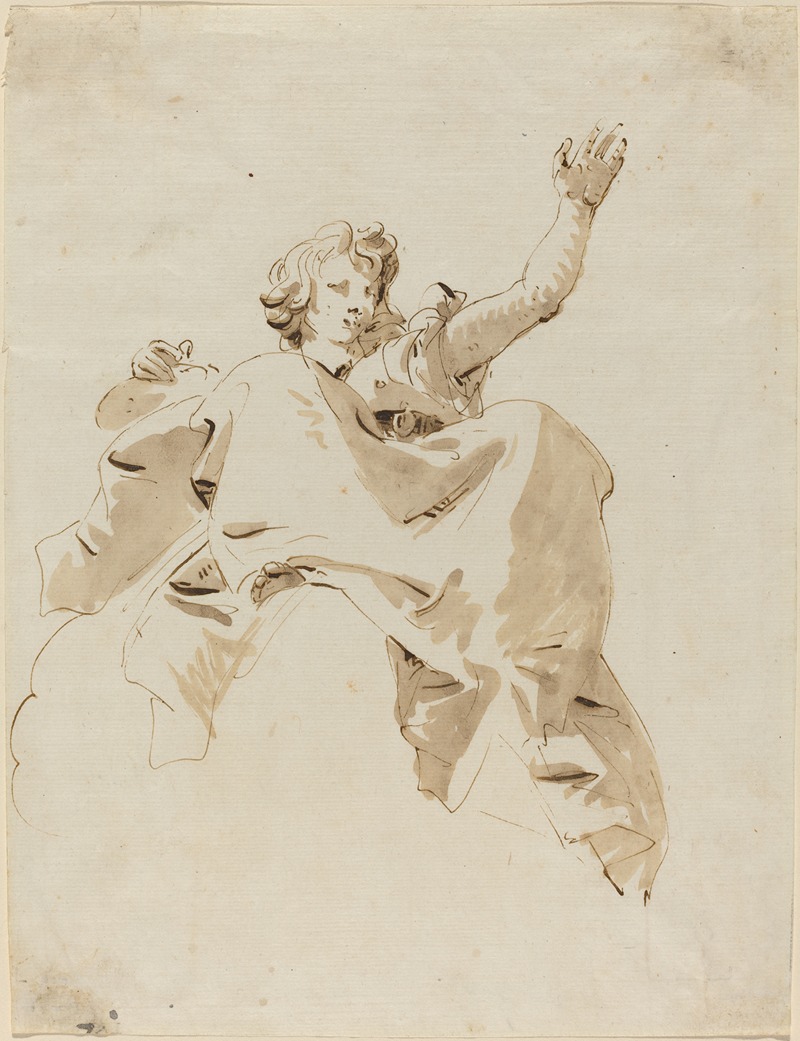
A Woman Seated on a Cloud, Seen from Below
A hand-painted replica of Giovanni Battista Tiepolo’s masterpiece A Woman Seated on a Cloud, Seen from Below, meticulously crafted by professional artists to capture the true essence of the original. Each piece is created with museum-quality canvas and rare mineral pigments, carefully painted by experienced artists with delicate brushstrokes and rich, layered colors to perfectly recreate the texture of the original artwork. Unlike machine-printed reproductions, this hand-painted version brings the painting to life, infused with the artist’s emotions and skill in every stroke. Whether for personal collection or home decoration, it instantly elevates the artistic atmosphere of any space.
Giovanni Battista Tiepolo, an Italian painter and printmaker, is renowned for his grandiose and imaginative frescoes that epitomize the Rococo style. One of his lesser-known works, "A Woman Seated on a Cloud, Seen from Below," showcases his exceptional ability to manipulate perspective and create ethereal compositions. Although there is limited information available specifically about this painting, Tiepolo's broader body of work provides context for understanding his artistic approach and significance.
Tiepolo was born in Venice in 1696 and became one of the most prominent painters of the 18th century. His work is characterized by its vibrant color palette, dynamic compositions, and the use of dramatic light and shadow. Tiepolo's frescoes often adorned the ceilings of palaces and churches, where he skillfully employed the quadratura technique to create the illusion of three-dimensional space on flat surfaces. This technique involved painting architectural details that appeared to extend the actual architecture of the room, thereby enhancing the immersive experience for viewers.
"A Woman Seated on a Cloud, Seen from Below" is a testament to Tiepolo's mastery of perspective and his ability to convey a sense of weightlessness and grace. The painting likely depicts a mythological or allegorical figure, a common theme in Tiepolo's work, where he often drew inspiration from classical mythology and religious narratives. The depiction of figures seated on clouds is a recurring motif in his oeuvre, symbolizing divinity, transcendence, or the celestial realm.
Tiepolo's use of foreshortening in this painting is particularly noteworthy. By portraying the figure from below, he creates a dramatic viewpoint that enhances the illusion of the figure floating above the viewer. This technique not only demonstrates his technical skill but also engages the viewer in a dynamic visual experience, inviting them to gaze upward and become part of the scene.
The painting's composition is likely characterized by Tiepolo's signature use of light and color. He often employed a soft, diffused light to illuminate his figures, lending them an ethereal quality. His color palette typically included pastel hues and vibrant contrasts, which added to the sense of movement and vitality in his work.
While specific details about "A Woman Seated on a Cloud, Seen from Below" are scarce, it can be appreciated within the broader context of Tiepolo's artistic achievements. His work had a significant impact on the development of European art, influencing contemporaries and later artists alike. Tiepolo's ability to blend classical themes with the decorative elegance of the Rococo style made him a sought-after artist in his time, with commissions across Italy and beyond, including Germany and Spain.
In summary, "A Woman Seated on a Cloud, Seen from Below" exemplifies Giovanni Battista Tiepolo's skill in creating captivating and imaginative compositions. Through his innovative use of perspective, light, and color, Tiepolo transports viewers to a world of myth and fantasy, solidifying his legacy as one of the foremost painters of the 18th century.





